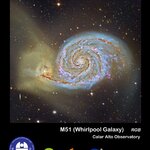Space

An international team of scientists say a new technique could turn pulsars into superbly accurate time-keepers.
A pulsar is the spinning, collapsed core of a massive star that ended in a supernova explosion and was first discovered in 1967. A pulsar weighs more than our Sun but can be the size of New York City and produces beams of radio waves which sweep around the sky hundreds of times a second. Radio telescopes receive a regular train of pulses as the beam repeatedly crosses the Earth so that the object is observed as a pulsating radio signal.
The clock-like nature of the…
Which is cooler: "I run a rocket company" or "This is my secret remote tropic island spaceport"?
In A Spaceport of Her Own, I interview Randa Milliron about InterOrbital System's code-named "Tonga Spaceport". Because, you know, it's a spaceport... in Tonga. Setting up a private rocket site in the remote Tropics sounds like a movie supervillain plan, but Randa Milliron of InterOrbital Systems (InterOrbital.com) explains why it's the best way to get us to orbit and beyond.
These are the folks launching our Project Calliope satellite, and this is the very spaceport it will…

High-resolution images show that the solar corona is filled with large, banana-shaped magnetic structures called coronal loops. It is thought that these coronal loops, some over a few 100,000 km long, play a fundamental role in governing the physics of the corona and are even responsible for huge atmospheric explosions that occur in the atmosphere, what we call solar flares.
These giant magnetic loops have also been observed to undergo periodic (oscillatory) motion, which can be thought of as someone plucking a guitar string (transversal oscillations) or blowing the wind-pipe instrument (…

Astronomers have glimpsed what could be the youngest known star at the very moment it is being born -so young it can hardly be considered a true star because it is in the earliest stages of star formation and has just begun pulling in matter from a surrounding envelope of gas and dust.
The Astrophysical Journal study authors found the object using the Submillimeter Array in Hawaii and the Spitzer Space Telescope. The new star, known as L1448-IRS2E, is located in the Perseus star-forming region about 800 light years away yet within our Milky Way galaxy.
Stars form out of large, cold,…

South Korea Fails to Launch Space Rocket
The's second attempt to launch its first space rocket has failed.
Minister of Education, Science and Technology Ahn Byung-man announced in a briefing on Thursday that the Naro space rocket was functioning normally until 137 seconds into flight, but the ground control center lost its communication link thereafter at an altitude of 70 kilometers.
He said the rocket is presumed to have exploded before the first stage booster was separated, citing a video footage from a camera installed on the second stage of the rocket.
Ahn said Korean and Russian…

Lutetia is a large, primitive asteroid left on the shelf for billions of years, presumably because no planet consumed it as the Solar System formed. Most measurements affirm this, making the asteroid out to be a 'C-type', which contains primitive compounds of carbon, but some others suggest that Lutetia is an 'M-type', which could mean there are metals in its surface.
If the second is true, it could be a real find in space science because although metallic asteroids do exist, they are thought to be fragments of the metallic core of larger asteroids that have since been shattered…

With the press of a button, yesterday Queen Beatrix of the Netherlands activated LOFAR and started the recording of its first official image. LOFAR (LOw Frequency ARray) is by all standards a big radio telescope. Centered in the North East of the Netherlands, it stretches far over the Dutch borders into Northwest Europe.
LOFAR location spread across Europe
Given its total antenna area, LOFAR is the world's largest radio telescope. Whilst that in itself makes LOFAR already stand out, the real distinguishing feature of LOFAR is its design principle. LOFAR does not rely on parabolic focusing…

Galaxy M51, now called the Whirlpool Galaxy, was discovered by Charles Messier in 1773 but its spiral structure was first found by William Parsons in 1845, using his huge (and wonderfully named) reflecting telescope called the Leviathan of Parsonstown. Today even small amateur telescopes can see that this galaxy is not isolated, but has a small companion, a dwarf irregular galaxy NGC 5195.
These two stellar systems are colliding and the spiral shape of M51 is due to the tidal forces unleashed during this process. At a distance of 23 millions of light-years, the apparent…
The nation's second attempt to launch its first space rocket has failed.
Minister of Education, Science and Technology Ahn Byung-man announced in a briefing on Thursday that the Naro space rocket was functioning normally until 137 seconds into flight, but the ground control center lost its communication link thereafter at an altitude of 70 kilometers.
He said the rocket is presumed to have exploded before the first stage booster was separated, citing a video footage from a camera installed on the second stage of the rocket. (video below)
type="application/x-shockwave-flash"…

GPS will die, sending airplanes crashing and sinking boats. Cell phones will fail, stranding travelers and resulting in people in remote areas dying due to exposure. Worse of all, our TV may go out for a few hours.
These are some of the doomsday scenarios prophecied in the current "Chicken Little" coverage of space weather, as the sun ramps up towards Solar Maximum during the same decade that our society has become perilously dependent on advanced technology.
So where's the science? The science is standing behind Chicken Little, simultaneously crying "pay attention to us"…